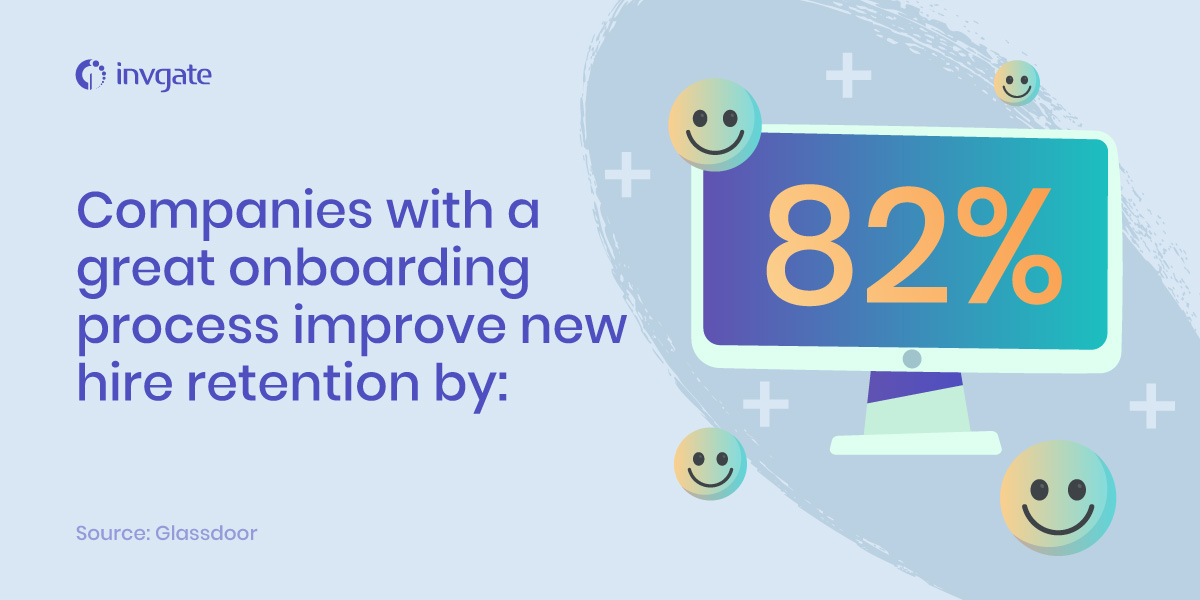Employee experience has been in HR and IT leaders’ minds ever since companies started shifting their ethos into a more employee-centric model. It’s no longer a matter of how much an employee can get done but how they can do it while still feeling like they want to keep doing it.Now that employees are in that strange transition period between home-office and hybrid work, everything about achieving an optimal employee experience has been brought to the forefront even more.
A key aspect of this is the digital employee experience, which plays a crucial role in streamlining workflows, enhancing communication, and supporting both desk and deskless workers. Thus, the course of action is clear: learn, adapt, and overcome.
What is employee experience?
Employee experience (EX) encompasses every interaction and touchpoint an employee has with their organization throughout their tenure. It’s not just about free snacks in the break room or casual Fridays – although those can certainly contribute. EX is a holistic view of how employees perceive their work environment, from the tools they use to the relationships they build and the culture they’re immersed in.
An employee experience framework is a vital tool for enhancing the overall employee journey, emphasizing its role in aligning company values with practices at each stage of the employee lifecycle.
We can identify three main spheres involved in employee experience:
-
Cultural experiences: The values, beliefs, and practices that shape the company’s identity.
-
Technological experiences: The digital tools and platforms employees use to perform their jobs.
-
Physical experiences: The actual workspace where employees spend their time.
When these elements align positively, magic happens. Employees become more engaged, productive, and likely to stick around for the long haul. And here’s the kicker – a great employee experience doesn’t just benefit the workforce; it directly impacts customer satisfaction and, ultimately, the whole company.
What is the employee lifecycle?
To truly optimize the employee experience, organizations need to consider the entire employee life cycle, from their first interaction with the company to their eventual departure. This journey is often referred to as the Employee Life Cycle (ELC), and it consists of seven key stages:
-
Attraction: Capturing the interest of potential candidates
-
Onboarding: Welcoming and integrating new hires into the organization
-
Engagement: Fostering a sense of purpose and commitment
-
Performance Management: Setting goals and providing feedback
-
Employee Development: Offering opportunities for growth and skill enhancement
-
Retention: Creating an environment that encourages employees to stay
-
Offboarding: Managing departures gracefully and learning from them
Each stage presents unique opportunities to enhance the employee experience. For instance, a smooth onboarding process can set the tone for a positive long-term relationship, while robust development programs can keep employees motivated and engaged throughout their tenure.

Benefits of improving employee experience
Increased employee engagement
Engaged employees are more productive, innovative, and loyal. Positive interactions, effective communication, and supportive leadership contribute to higher engagement levels, which in turn drives company success.
Employee engagement surveys are crucial for tracking engagement levels and taking action on the feedback gathered.
Enhanced collaboration and innovation
A positive work environment fosters collaboration and innovation. When employees feel comfortable and valued, they are more likely to share ideas and work together effectively.
Greater loyalty and retention
Employees who have a positive experience at work are more likely to stay with the company long-term. This reduces turnover and the associated costs of recruiting and training new employees.
Improving factors like work-life balance and effective onboarding can significantly boost employee productivity, contributing to greater loyalty and retention.

Strategies to enhance employee experience
When you face the question of how to improve the employee experience, it isn't easy to know where to begin. The task is vast, and pinpointing effective strategies and defining them can be overwhelming. We've broken it down into key areas to guide you through this process, hoping you can put together your own employee experience strategy.
Primary strategies
Understand your employee demographic
According to the US Bureau of Labor Statistics, a whopping 75% of the workforce will be made up of millennials by 2030. This is particularly true in the world of IT.
Be one step ahead. Acknowledging this while in its nascent stage will guarantee that you are prepared for what this demographic is looking for in their employee journey.
A key aspect of millennials as members of the workforce is that they value meaningful work and appreciate their uniqueness. By providing fertile ground for development in these areas, you will ensure a positive Employee Experience for your current and future workforce.
Offer a hassle-free application process
In a dynamic market such as IT, employee turnover rates are high, and job seekers constantly switch between different job portals. There’s nothing worse than applying through dozens of portals and being subjected to information overload.
You want to make your potential employees’ lives easier! Employee engagement happens even before your employees have been hired. If you go out of your way to make the hiring process diverse, easy to navigate, and employee-centered, you’ll surely stick out from the rest.
Have an updated onboarding process
The onboarding process can make or break the employee experience. Because planning ahead of your employee’s first days of work is important, here are a couple of quick tips to be up to date with what is expected of purely digital and/or hybrid working models:
-
Help your new hires get acquainted with your company culture by assigning a mentor to walk them through their first couple of weeks in their new position.
-
Update your virtual onboarding schedule: rolling a week-long onboarding program into a single-day meeting that focuses on benefits, wellness, and company culture values will be enticing for your new employees and efficient for your HR team.
-
Use regular check-ins and super animated facilitators to keep your new employees engaged through the onboarding process.

Cross-functional communication
Fostering robust and direct communication is absolutely paramount to improving the employee experience throughout an employee’s lifecycle in your company. That’s where cross-functional communication comes into play.
You want to avoid duplicating efforts. By always keeping your teams in the loop about what’s cooking in terms of projects and goals, you’ll save time and make it clear to your employees that they are working towards a tangible objective.
Always ask yourself, “Would these teams benefit from knowing how their projects are connected?” If the answer is “yes,” then cross-functional communication is the way to go when trying to boost employee engagement. A great way to go about this for IT organizations is a robust service desk tool.
Prime both your digital and physical workplaces
Revamping your office design to encourage connection and collaboration can significantly enhance employee engagement. Ensure that your workspace is comfortable and conducive to productivity. Focus on creating spaces that feel like a home away from home so you can help employees feel more at ease and motivated. Corporate digital signage can be utilized in shared spaces to display announcements, schedules, and updates, enabling employees to stay informed throughout the day.
The digital workplace is just as important. Effective tools and platforms can keep remote teams connected and engaged by enhancing communication. Additionally, providing resources and support to help employees create a productive and comfortable home office environment is essential. This includes offering guidance on setting up ergonomic workstations, providing necessary equipment, and fostering a culture of open communication and support.
Other in-depth strategies to implement
Prioritize mental and physical well-being
Healthy employees are highly engaged employees. Prioritizing mental and physical well-being is key to maintaining high levels of engagement, especially in today's dynamic work environments, whether traditional, hybrid, or fully remote. Here are some strategies to enhance employee well-being:
-
Regular wellness check-ups: These can include health screenings, fitness assessments, and mental health evaluations.
-
Promote open communication: Encourage a culture of open communication where employees feel comfortable discussing their mental and physical health. Provide training for managers on how to have sensitive conversations and create an environment where employees feel safe to share their concerns.
-
Provide access to wellness resources: This can include access to counseling services, wellness workshops, fitness programs, and mindfulness sessions. Encourage employees to explore healthy nutrition options as part of their overall well-being strategy. Ensure these resources are easily accessible and communicated to all employees.
-
Create a supportive work environment: Design your workplace to promote health and well-being. This includes ergonomic workstations, healthy food options, and relaxation and social interaction spaces. For remote workers, provide guidelines on setting up a healthy home office and offer support in acquiring the necessary equipment.
-
Encourage work-life balance: Promote work-life balance by offering flexible working hours and remote work options and encouraging employees to take regular breaks and vacations. Help employees manage stress by setting realistic workloads and providing time management training.
Improving employee well-being goes beyond policies; fostering a workplace culture that values mental and physical health can significantly enhance productivity and job satisfaction.
Diversity and inclusion
Diversity and inclusion (D&I) are critical components of a positive employee experience. A diverse and inclusive workplace improves employee satisfaction and retention. Here’s how to make your D&I efforts more valuable:
-
Promote a culture of belonging: This means recognizing and valuing the unique perspectives and contributions of each individual. Implement initiatives that celebrate diversity, such as cultural awareness events, diversity training, and employee resource groups.
-
Implement inclusive hiring practices: Ensure your recruitment process is free from bias by using diverse interview panels and standardizing interview questions. Partner with organizations that promote diversity in the workplace and actively seek to hire from underrepresented groups.
-
Provide ongoing D&I training: Offer regular training sessions on diversity and inclusion to educate employees about the importance of these values. Training should cover topics such as unconscious bias, cultural competency, and inclusive leadership. Encourage open discussions and provide resources for continuous learning.
-
Create inclusive policies: Review and update company policies to ensure they are inclusive. This includes flexible working arrangements, parental leave, and accommodations for employees with disabilities. Make sure these policies are communicated clearly and implemented consistently.
-
Foster an inclusive leadership: Leaders play a crucial role in driving D&I efforts. Ensure that your leadership team is diverse and that they actively champion inclusive practices. Provide them with the tools and training needed to lead diverse teams effectively.
Provide training and learning opportunities
Nothing says “we care about our employee engagement” more than continuous and innovative employee training. Continuous improvement is key.
After a successful onboarding process, the next logical step to foster a positive overall employee experience is to let them know that you want them to hone their skills throughout their journey. This means coaching, mentoring, and online courses—all different and effective ways of nurturing the relationship between employees and employers through education.

Step 3: Focus on continuous improvement
Gather employee feedback
Long gone are the days of infrequent performance reviews. Constant case-by-case positive feedback has become the new standard. However, what’s all that information worth if you are not gearing it towards a more positive employee experience? Well, the key to being smart in how you conduct surveys is having them tailored to your employee’s needs and aspirations.
Smart surveying involves conducting surveys that inform employees that their opinions are critical to their self-realization and short-term achievements as much as your company’s success. The same thing goes for performance reviews. Remember that proper employee feedback and job satisfaction go hand in hand.
-
Pulse surveys provide real-time feedback on employee satisfaction and engagement.
-
Onboarding surveys help new hires feel valued and provide insights into their initial experiences.
-
Exit surveys offer departing employees a chance to share their thoughts, helping you identify areas for improvement.
Measure employee satisfaction and engagement
Positive employee engagement is the outcome of a good employee experience. But how do you measure employee engagement reliably?
There are a few ways to do that. One of them is to answer the Employee Net Promoter Score (eNPS). Introduced in 2003, eNPS has consistently been a great framework and a trusty metric to evaluate both loyalty and Employee Engagement. Combining both the simplicity of eNPS and constant, laser-focused surveying can allow employers to better gauge how an employee’s journey is going at every step of the way.
Step 4: Build and maintain a strong company culture
Role of leadership in company culture
Effective leadership is the cornerstone of a strong company culture. Leaders set the tone for the organization, influencing everything from employee morale to productivity. When leaders embody the values and vision of the company, they inspire their teams to do the same.
This alignment between leadership and company culture is critical because it helps:
-
Model behavior: Leaders serve as role models. Their actions and attitudes are observed and often emulated by employees. When leaders demonstrate integrity, respect, and commitment, it fosters a similar mindset throughout the organization.
-
Build trust: Trust is foundational to a positive company culture. Leaders who are transparent, consistent, and fair in their decisions and interactions build trust with their employees. This trust leads to higher engagement, loyalty, and willingness to go above and beyond.
-
Drive engagement: As mentioned, engaged employees are more productive, innovative, and satisfied with their work. Effective leaders know how to motivate their teams, recognize their efforts, and create an environment where employees feel valued and empowered.
-
Navigate change: In times of change or uncertainty, strong leadership provides stability and direction. Leaders who communicate clearly and involve employees in the change process can mitigate resistance and maintain a positive culture.
-
Promote collaboration: Leaders who encourage teamwork and open communication create a collaborative environment. This not only enhances problem-solving and innovation but also strengthens relationships within the team.
Employee involvement in shaping company culture
Back in the day, this used to be the other way around. Nowadays, as the corporate world shifts towards an employee-centered business model, the creation of a shared vision through culture has become a collaborative effort. You definitely want to keep core values intact.
However, allowing the employee journey also to include active participation in shaping how your values are upheld, greatly improves employee engagement. This is because giving employees this level of agency communicates to them that their role inside of the company is not only valuable but also integral to the company’s evolution towards new horizons.
Gather feedback. Listen to your workers. Foster a judgment-free collaborative environment for them to help define their own workplace.

Best practices for leaders to enhance employee experience
To effectively enhance the employee experience and cultivate a strong company culture, leaders can adopt the following best practices:
Communicate openly and frequently
-
Transparency: Share information about company goals, changes, and challenges openly. This transparency helps employees understand the bigger picture and their role in it.
-
Feedback channels: Establish regular channels for two-way communication, such as town hall meetings, suggestion boxes, and one-on-one check-ins. Actively listen to employee concerns and feedback.
Empower and develop employees
-
Delegation: Trust employees with responsibilities and provide them with the autonomy to make decisions. This empowerment boosts confidence and engagement.
-
Professional growth: Invest in employees' development through training, mentorship, and career advancement opportunities. Encourage continuous learning and skill development.
-
Recognize and reward contributions: Regularly recognize and celebrate individual and team achievements. A simple thank you or public acknowledgment can significantly boost morale. Implement reward systems that align with company values, such as performance bonuses, extra time off, or professional development opportunities.
Lead by example
-
Consistent Behavior: Align your actions with the company’s values and standards. Be the embodiment of the culture you want to create.
-
Accountability: Hold yourself and others accountable for maintaining the company culture. Address behaviors that are inconsistent with the desired culture promptly and fairly.
The bottom line
Think about your own work experiences. Chances are, some of your best (or worst) memories revolve around interactions with your managers, teammates, or the company as a whole. These daily touchpoints are the building blocks of employee experience.
When employees feel heard, valued, and supported by their managers, they're more likely to trust the company's leadership and buy into its vision. Collaborative team dynamics foster innovation and make coming to work a joy rather than a chore. And when the company consistently demonstrates its commitment to its people, employees reciprocate with loyalty and effort.
The next years are sure to bring a handful of new challenges in terms of improving and achieving an exceptional employee experience. As HR leaders and IT managers, veering towards a model that puts employees in a position of worth in such trying times might be difficult but not impossible.
Remember that only by cultivating trust and communication with your employees can you achieve success in this ever-growing market. As the old saying goes: “Take care of your employees, and they will take care of the customers.”
It's worth noting that effective leadership plays a starring role in this equation. Leaders who prioritize open communication, provide constructive feedback, and genuinely care about their team's well-being are the secret sauce to a positive employee experience.















